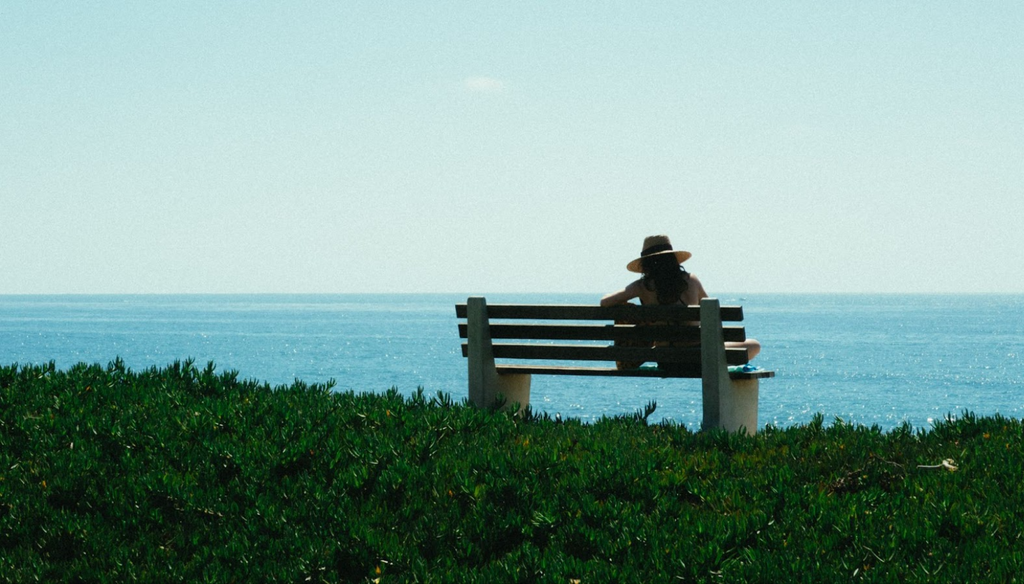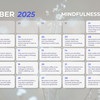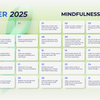How do I travel alone with anxiety?

Undertaking a trip across the world by yourself can be a life-changing experience, full of opportunities to learn about the world and yourself. However, for individuals dealing with anxiety, the thought of traveling alone can evoke feelings of unease and apprehension.
Fortunately, with the right strategies and tools like Route4Me in place, you can successfully navigate your solo journey and manage anxiety along the way. Let us explore essential preparations for solo travels, practical techniques for traveling alone with anxiety, and delve into the benefits of stress relief devices in providing comfort and support during your travels.
What To Prepare When Traveling Alone
Proper preparation is key to ensuring a smooth and enjoyable experience when traveling alone. Below is a list of some essential things to consider and prepare before embarking on your solo journey:
1. Research and Plan
Conduct thorough research about your destination. Familiarize yourself with local customs, traditions, and etiquette to show respect and avoid any cultural misunderstandings. Plan some time for spontaneity and flexibility while arranging your itinerary's lodgings, modes of transportation, and activities. Research safety precautions, such as areas to avoid and common scams, and ensure you have emergency contact information and important documents readily available.
2. Pack Smart
Pack light, focusing on essentials. Consider the climate and activities you'll be engaging in, and pack appropriate clothing and footwear. Make sure to leave home with your medications, as well as an emergency kit, travel adapters, and chargers. Keep duplicates of your passport, identification, travel insurance, and itinerary, just in case. Tell a reliable person where you're planning to go so they can keep an eye out for you.
3. Stay Connected
Ensure you have a dependable mode of communication while traveling. Purchase a local SIM card or consider an international data plan to stay connected to loved ones and have access to maps and travel resources. It's also wise to have backup options like offline maps and guidebooks in case of technology failure.
4. Stay Safe
Prioritize your safety by being vigilant and aware of your surroundings. Avoid displaying valuables and keep your belongings secure. Trust your instincts and avoid risky situations. Share your itinerary with someone and check in regularly. Research safe transportation options and be cautious when using rideshare services or public transportation.
5. Financial Planning
Plan your finances ahead of time. Before you go, let your bank or credit card company know where your trip will take you. Take a combination of cash, credit cards, and an extra card, just in case. Keep a budget in mind and track your expenses to stay within your means.
6. Learn Basic Local Language Phrases
It is helpful to familiarize the basics of the local language when attempting to communicate with locals and get around when traveling. Feeling more at ease and fostering great encounters can be done with little more than a simple welcome, a request for directions, and some courteous expressions.
Understanding Anxiety and Its Impact on Travel
Before we delve into the strategies, it's essential to grasp the nature of anxiety and how it can affect your travel experience. Different types of anxiety include panic disorder, social anxiety, and generalized anxiety disorder.
Common symptoms may include excessive worry, racing thoughts, restlessness, rapid heartbeat, and difficulty sleeping. When combined with the unfamiliarity and unpredictability of travel, these symptoms can intensify, making it challenging to embark on a solo adventure.
Here are some common impacts of anxiety when traveling alone:
1. Increased Worry and Fear
Anxiety can intensify worries and fears when traveling alone. Simple tasks like navigating unfamiliar places or interacting with new people may become daunting and trigger excessive worry. This can make you feel more unsafe, which can diminish your enjoyment of your trip.
2. Difficulty in Making Decisions
Anxiety can make decision-making a challenge while traveling alone. Analysis paralysis or frequent second-guessing might result from being afraid of mistakes or encountering an unexpected situation. This can create additional stress and hinder the ability to make confident and timely decisions.
3. Social Isolation
Anxiety can contribute to social isolation when traveling alone. Fear of judgment or rejection may prevent individuals from engaging with others or participating in social activities. This can result in missed opportunities for connection and meaningful experiences, ultimately impacting the overall enjoyment of the trip.
4. Increased Sensitivity to Surroundings
Individuals with anxiety may become more sensitive to their surroundings when traveling alone. Busy airports, crowded streets, or unfamiliar accommodations can heighten anxiety levels. The constant vigilance and hyperawareness can be exhausting and detract from fully immersing oneself in the travel experience.
5. Disrupted Sleep Patterns
Anxiety can disrupt sleep patterns, making it difficult to get adequate rest while traveling alone. Sleep disturbances, such as insomnia or nightmares, can exacerbate anxiety symptoms and leave individuals feeling fatigued and irritable during their journey. Lack of quality sleep can hinder overall well-being and enjoyment of the travel experience.
6. Reduced Spontaneity and Flexibility
Anxiety can limit the ability to be spontaneous and adaptable while traveling alone. Sticking to a strict schedule and being reluctant to try new things stem from a fear of the unknown and a need for control. This can restrict the exploration of unexpected opportunities or unique experiences that often arise during travel.
7. Negative Impact on Mental and Physical Health
Physical and mental health can be negatively impacted by the stress and anxiety encountered during solo travel. Increased cortisol levels and tension in the body can lead to physical discomfort and fatigue. Additionally, persistent anxiety can contribute to mental health challenges such as heightened stress levels, depressive symptoms, or panic attacks.
It's important to acknowledge and address these impacts of anxiety when traveling alone. By implementing coping strategies, seeking support from loved ones, and utilizing stress relief techniques, individuals can navigate these challenges and create a more enjoyable and fulfilling travel experience.
Strategies for Traveling Alone with Anxiety
Traveling alone with anxiety can present unique challenges, but it doesn't have to deter you from embarking on solo adventures. Anxiety may be overcome, and a positive travel experience can be achieved with the appropriate mental preparation and attitude.
1. Self-Awareness and Preparation
Develop self-awareness by identifying your anxiety triggers related to solo travel. This will enable you to prepare and plan accordingly. Research your destination, familiarize yourself with local customs, and create a detailed itinerary to minimize unexpected situations that may trigger anxiety.
2. Gradual Exposure
If you're new to solo travel or experiencing heightened anxiety, start with shorter trips or destinations closer to home. Gradually expose yourself to the experience, allowing you to build confidence and adapt to the challenges of traveling alone. Celebrate each small step and acknowledge your progress along the way.
3. Self-Care Practices
Prioritize self-care to support your mental and emotional well-being while traveling alone. Reduce your anxiety by practicing relaxation techniques like deep breathing, mindfulness, or meditation. Incorporate physical activities, eat nutritious meals, and maintain proper hydration to keep your body and mind balanced.
4. Positive Self-Talk and Cognitive Restructuring
Discourage pessimistic thinking and counter it with upbeat affirmations.
Practice cognitive restructuring by reframing anxious thoughts into more rational and realistic perspectives. Remind yourself of your capabilities, strengths, and past successful experiences to boost self-confidence and reduce anxiety.
5. Support Network
Stay connected with a support network of family, friends, or fellow travelers. Share your travel plans with a trusted person who can provide encouragement and be available for check-ins or assistance if needed. Having a support system in place can help ease anxiety and stress during difficult times.
6. Engage in Relaxation Techniques
Incorporate relaxation techniques into your daily routine while traveling alone. This may include activities such as yoga, guided meditation, listening to calming music, or journaling. Do what helps you relax and unwind the most, and make it a regular part of your routine.
7. Seek Professional Help if Needed
If your anxiety becomes overwhelming or significantly impacts your ability to enjoy your travels, consider seeking professional help. Talking to a therapist or counselor about your travel anxiety and the difficulties you've encountered will help you tremendously.
Remember, everyone's journey with anxiety is unique, so it's essential to explore strategies that resonate with you personally. Be patient with yourself, celebrate small victories, and embrace the growth and self-discovery that can come from traveling alone with anxiety.
How Can A Stress Relief Device Help Minimize Anxiety When Traveling Alone
Stress relief devices can be valuable tools in minimizing anxiety when traveling alone. Below are several ways they can contribute to anxiety reduction:
1. Distraction and Redirected Focus
Stress relief devices, such as stress balls, fidget spinners, or sensory toys, provide a physical outlet for nervous energy and distract from anxious thoughts. Engaging with these devices can redirect your focus away from anxious triggers and create a sense of calm.
2. Sensory Stimulation
Many stress relief devices offer sensory stimulation, such as tactile sensations or visual elements. These devices can help regulate your nervous system and promote relaxation by engaging your senses. The repetitive motions or textures can have a soothing effect, providing a welcome distraction from anxiety-inducing situations.
3. Portable and Convenient
Stress relief devices are often compact and portable, making them ideal for travel. Their convenience allows you to have them readily available whenever anxiety arises. Whether you're waiting at an airport, sitting on a train, or resting in your hotel room, you can discreetly use these devices to alleviate anxiety.
4. Grounding and Mindfulness
Using stress relief devices can serve as a grounding technique, bringing your attention to the present moment. You can take your mind off your worries about the past or the future by concentrating on the device's physical sensations and movements. This practice promotes mindfulness and helps you stay centered during your solo travels.
5. Regulation of Breathing and Heart Rate
Many stress relief devices encourage rhythmic movements or deep breathing exercises. These actions have the potential to slow the heart rate and lower blood pressure, which contribute to feelings of calm. By engaging in these techniques with stress relief devices, you can trigger the relaxation response and reduce anxiety symptoms.
6. Comfort and Familiarity
Traveling alone can be unsettling, as it often involves navigating unfamiliar environments. Stress relief devices provide a sense of familiarity and comfort in these situations. Having a familiar object to hold or interact with can offer a sense of security, acting as a reassuring presence during moments of heightened anxiety.
7. Emotional Support
Stress relief devices can offer emotional support by providing a non-judgmental outlet for emotional release. Squeezing a stress ball or manipulating a fidget spinner can help release tension and healthily express emotions. This outlet can be particularly beneficial when facing challenging or overwhelming moments during your solo travels.
While stress relief devices can be helpful in managing anxiety when traveling alone, it's important to remember that they are just one tool among many. It's also essential to explore and utilize other coping strategies, such as self-care practices, mindfulness techniques, and seeking support from loved ones, to create a comprehensive approach to managing anxiety during your journey.
Conclusion
Traveling alone with anxiety can be a challenging but gratifying experience. By implementing self-care techniques, understanding your triggers, and planning ahead, you can effectively manage anxiety and enjoy a fulfilling solo journey. Stress relief devices serve as valuable tools, offering sensory stimulation and creating a calming environment while on the go.
Remember, every step you take to address your anxiety brings you closer to embracing the wonders of solo travel. So, equip yourself with these strategies and stress relief devices, embark on your adventure, and unlock a world of self-discovery and personal growth. Bon voyage!




